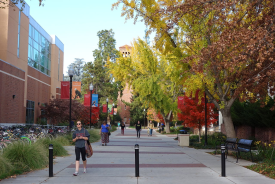Scientists at Stanford University were able to find a new way to fix damaged corneas, which are the transparent outer coatings of the eye that cover the iris and pupil. This new approach is expected to treat a major source of vision problems and blindness.
A lot of new eye cells are being grown in a Palo Alto lab. The team has tried to refurbish diseased and damaged tissue with healthy new cells.
Dr. Jeffrey Goldberg, professor and chairman of the Department of Ophthalmology at the Stanford School of Medicine and lead researcher of the study, said that one exciting possibility of this cellular approach is that one donor cornea can contribute a few parent cells. With this, enough cells can be generated to treat millions of patients.
MedicalXpress reported that other scientists have tried to grow full corneas from scratch. They do this by attaching a fragile film of cells to a membrane. However, this poses a challenge in terms of bioengineering.
The approach of the Stanford scientists, which is eight years in the making, opt to grow individual cells instead. They then harvest a few "mother" corneal cells named progenitor cells, which are donated from a cadaver and are placed in a warm broth in petri dishes to give birth to many new corneal cells.
The team used magnetic nanoparticles, measuring only 50 nanometers in diameter. They magnetized the new cells with nanoparticles which were then placed into a syringe and injected into the eye, specifically at the back of the cornea.
The magnetic nanoparticles fall off the cells and exit the eye. They leave the body through the patient's urine.
Dr. Goldberg added that they want to mass produce cells that can be bought in the market. These cells are expected to be easily transplanted into patients with severe damage to the cornea.
According to the Daily Mail, the researchers tested the method, particularly for safety, in 11 patients during a Phase 1 trial. They found that the procedure was safe and also witnessed hints of efficacy.
© 2025 University Herald, All rights reserved. Do not reproduce without permission.








